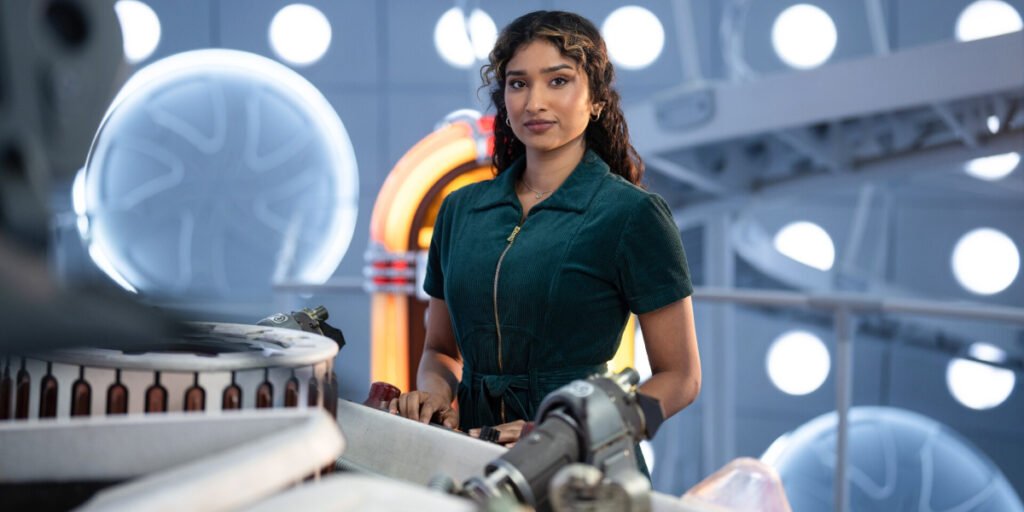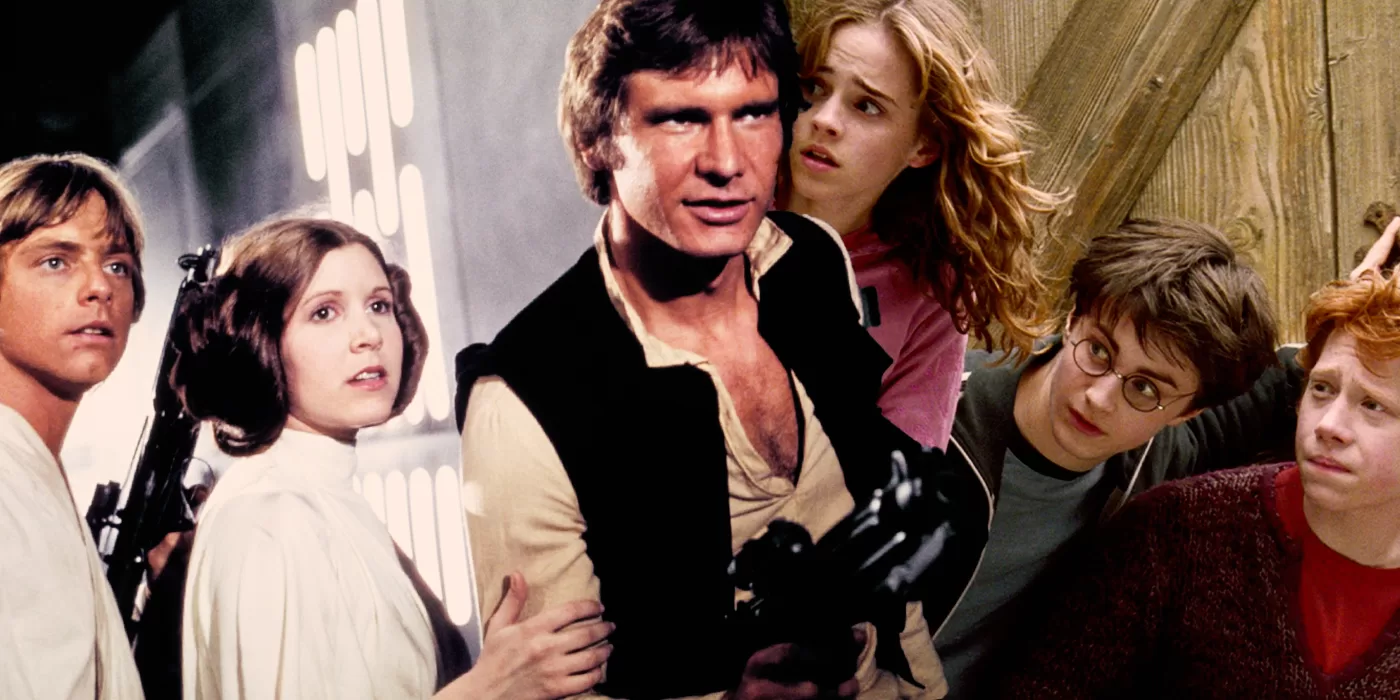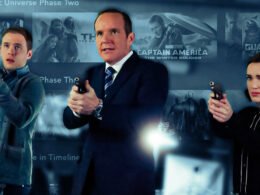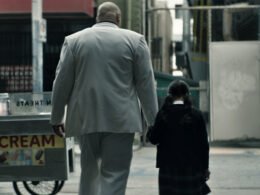Warning: This article contains minor spoilers for Doctor Who Season 2, Episode 1 “The Robot Revolution.”
Ncuti Gatwa returns for his second season as The Doctor in Doctor Who, and it’s a season that’s expected to go above and beyond the first (hopefully). In the last season, the Doctor left Ruby Sunday (Millie Gibson) back on Earth after discovering the identity of her birth mother — a storyline that the whole season revolved around and which, unfortunately, ended on an unsatisfying note. Ruby is still expected to join us in this installment, as she’s been featured in trailers and the first clip released for the season way back in Doctor Who: Unleashed, which showcased her trying to get people out of a pub due to some unknown danger.
In the second season, we’re introduced to Belinda Chandra (Varada Sethu). This character should be familiar to fans, as Varada Sethu first made her appearance in Doctor Who Season 1, Episode 3, “Boom,” as Mundy Flynn, the Anglican marine. This season promises new exciting adventures with the Doctor and Belinda Chandra while also offering a new exciting dynamic that we haven’t seen before between a Doctor and companion. The premiere episode already has a few things in store for fans, such as the return of the mysterious and illustrious Mrs. Flood (Anita Dobson) and the TARDIS not being able to return Belinda home as the trailers have suggested.
‘Doctor Who’ Offers a Fresh New Exciting Dynamic With Belinda Chandra

Just like how there were similarities between the ninth Doctor (Christopher Eccleston)/Rose (Billie Piper) and fifteenth Doctor/Ruby, there are also similarities that can be found between the tenth Doctor (David Tennant)/Martha (Freema Agyeman) and fifteenth Doctor/Belinda. The main common factor is that both Martha and Belinda are nurses who have been grabbed away from their day jobs. There’s a fun line later in the episode where Belinda asks the Doctor for his name, and he responds like he usually does with “the Doctor,” and instead of Russell T Davies’ using the usual tricks and going down the “Doctor Who” pathway of answers, Belinda responds by saying she’s “the nurse,” with the Doctor finally saying, “Doctor and nurse, good team.”
This is a clear double entendre, with both occupations working well alongside each other, but also the fact that this isn’t the first time the Doctor has worked alongside a nurse before, referencing Martha Jones. This first episode makes it easy to point fingers at Martha Jones, but with Adjoa Andoh, who plays Francine Jones, Martha’s mother, attending the UK premiere, it becomes hard not to make these associations, and Russell T Davies clearly wants fans to make the connections between the two.
Doctor Who follows a formula, and it’s one that works. As they say, if it’s not broken, don’t fix it. However, this might be the one scenario where a little change doesn’t hurt. Usually, the Doctor takes a human companion with him to travel throughout time and space, and 100% of the time, they’re perfectly fine with going with him in the TARDIS after a bit of persuading. Now compare this to the real world, and if a random man persuaded you to join him in his blue box for some adventures, it sounds like a crime waiting to happen.
Belinda doesn’t want to travel with the Doctor and already understands him as a person. We’ve known how dangerous a character he can be, but for the first time, a companion is finally realizing all on their own how dangerous he seemingly is. There’s a clear connection between Mundy Flynn and Belinda Chandra that the Doctor doesn’t believe to be a coincidence and is a sign from above that they’re destined to travel together. Belinda, on the other hand, thinks otherwise and would rather get back to her mundane life.
This episode starts off by introducing us to Belinda Chandra and a person from her past (Jonny Green), who names a star MissBelindaChandra for her (although she would rather be called just Belinda Chandra). We begin to get an idea of what type of person this character is; he’s controlling, always correcting her, and has the mindset of an incel. Doctor Who is known for always adding social commentary to their episodes, and in the past, it was always in such a subtle way that you’d understand the message while still being able to enjoy a well-written and entertaining episode of the series.
Doctor Who is a show that children can watch, so you’ll always want them to understand what you’re writing, but Russell T Davies forgets that the bulk of the people who watch his show are adults and don’t need everything spelled out loud for them, which is unfortunately what this premiere episode does. It explores themes of control, coercion, entitlement, and toxicity and at first, does so in a way that feels meaningful, but the third act drops an unnecessary amount of exposition to explain all the themes and their importance to the episode.
Russell T Davies has shown with the previous season that he can write a good episode that explores themes without having to spell it out for the viewers. In doing so, he allowed an interesting discussion to be fostered online. The issue that persisted with its first season is that the writing felt inconsistent with Russell T Davies’ episodes, and the highlights of the season were often episodes written by others such as Steven Moffat, Kate Herron, and Briony Redman. Thankfully, this latest season may rectify this issue, as they’ve gotten various writers of different backgrounds and genders on board to write some of the episodes of this show, and hopefully, we can see a substantial improvement.
What Is ‘Doctor Who’ Season 2 About?

It’s shown from the trailers that this season’s story is going to revolve around the Doctor trying to get Belinda Chandra home as the TARDIS refuses to take them back to Earth in the present day; this forces them to take the long way around. While this fresh dynamic between the Doctor and Belinda is the best thing to happen in this new era, it can quickly be torn apart if Belinda becomes too accustomed to traveling with the Doctor. This can easily be one of the best seasons of Doctor Who in the past seven years if Belinda’s attitude towards the Doctor doesn’t change and we get that reminder throughout their adventures that she doesn’t want to partake in any of this.
In “The Robot Revolution’s” opening moments, we get the return of Mrs. Flood (Dobson), last seen in the Season 1 finale, “Empire of Death,” where she was sporting a white fur coat, an umbrella, and a suitcase, telling us that the Doctor’s story was going to end in absolute terror. The TARDIS not being able to make its way directly back to present-day Earth might be the beginning of this absolute terror that she spoke of.
We finally find out that she’s moved away from being Ruby’s neighbor and is now Belinda Chandra’s neighbor. Is it merely a coincidence, or is she exactly where she needs to be every time we see her? The Season 1 finale disappointed a lot of Whovians, and Russell T Davies can only correct this by bringing a satisfying revelation to the mystery of Mrs. Flood. She seems like she’s going to be a character of great importance this season compared to the last, and hopefully, it can begin to unravel itself with each upcoming appearance she has.
“The Robot Revolution” Isn’t the Strongest ‘Doctor Who’ Premiere Episode

Thankfully, the Season 2 premiere is no “Space Babies,” but that doesn’t mean that this is the best improvement we could’ve gotten. When comparing this to Martha Jones’ introductory episode, “Smith and Jones,” there’s a night-and-day difference between the quality of what each episode offers its viewers. This is also an episode that doesn’t have an intriguing enemy behind it, as the robots and the A.I. Generator who rule the planet MissBelindaChandra aren’t that threatening or terrifying. It’s hard not to think that either Daleks, Cybermen, or any other returning villain would’ve been a better fit for this episode.
“The Robot Revolution” does a great job of introducing its new companion and giving the audience a taste of what to expect with this new TARDIS team, but unfortunately it’s the writing that lets down this premiere episode of Doctor Who Season 2. If it weren’t for the striking visuals and colors that the third act offers up, putting that Disney budget to great use, then the episode would’ve overall been a disappointment. Murray Gold‘s return on the score is always a welcome addition, as he knows how to perfectly orchestrate exciting, upbeat action chase sequences for the franchise, and you get a few of those within this episode to experience. Luckily, it gives a lot to look forward to with the upcoming episodes of Doctor Who Season 2.
Follow Agents of Fandom on socials for all the latest entertainment news and reviews.
'Doctor Who' Season 2, Episode 1 "The Robot Revolution" Review
'Doctor Who' Season 2, Episode 1 "The Robot Revolution" ReviewThe Good
- The Doctor and Belinda Chandra offer a new and refreshing dynamic to the TARDIS team.
- It boasts some of the best visuals that have been seen since the Disney acquisition.
- Murray Gold's score makes a triumphant return.
- A diverse writing team to look forward to with exciting episodes and storylines ahead.
The Bad
- The social commentary is not handled to the best of its capabilities.
- A weak episode when compared to previous premiere/companion introduction episodes.
- A returning villain such as the Dalek or Cybermen would've better fitted this episode.











